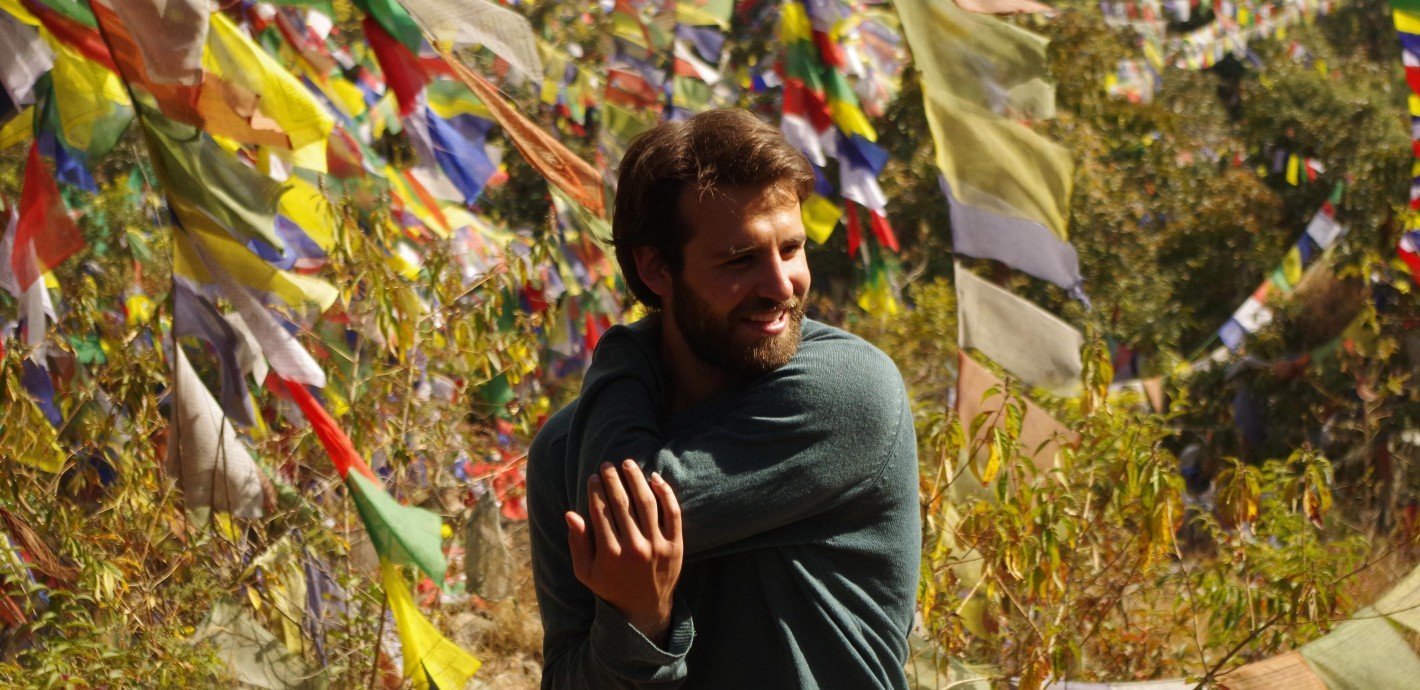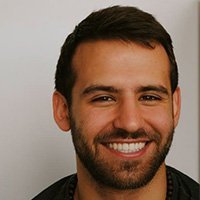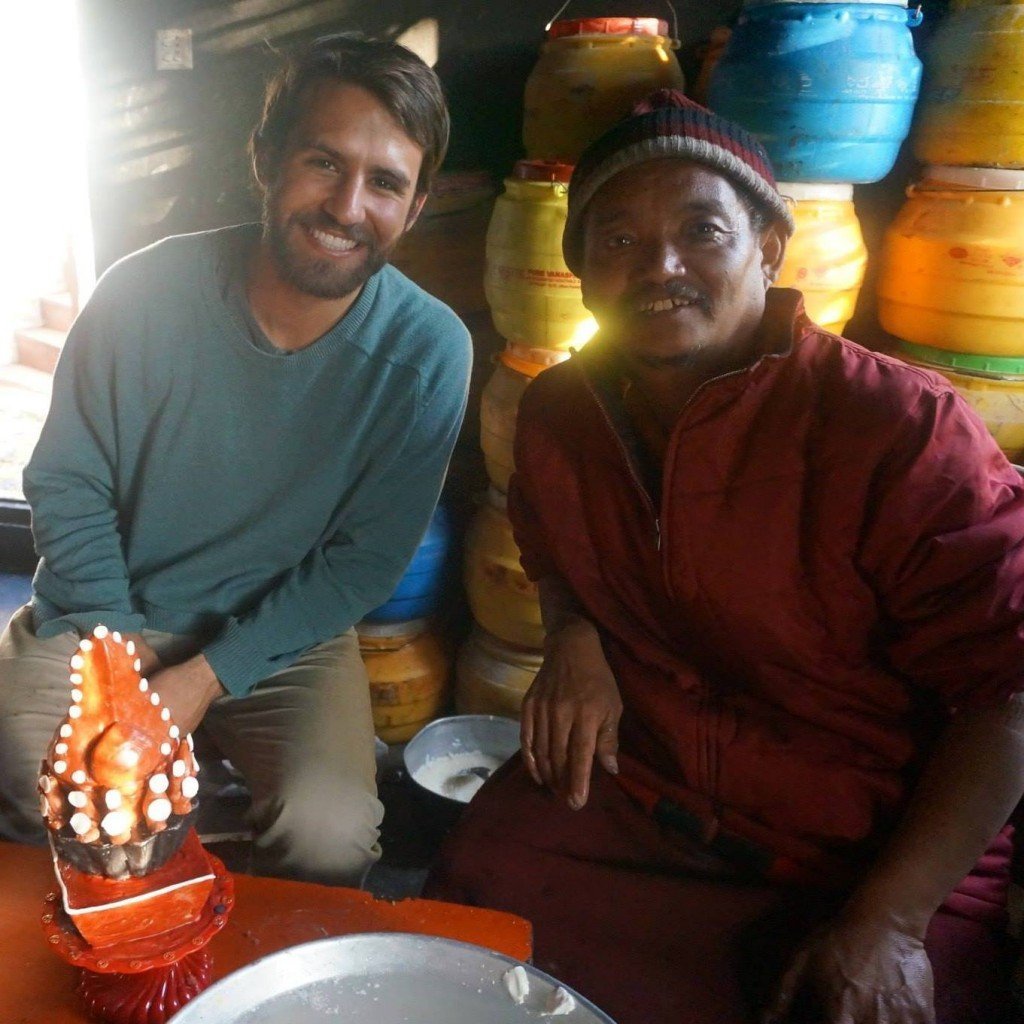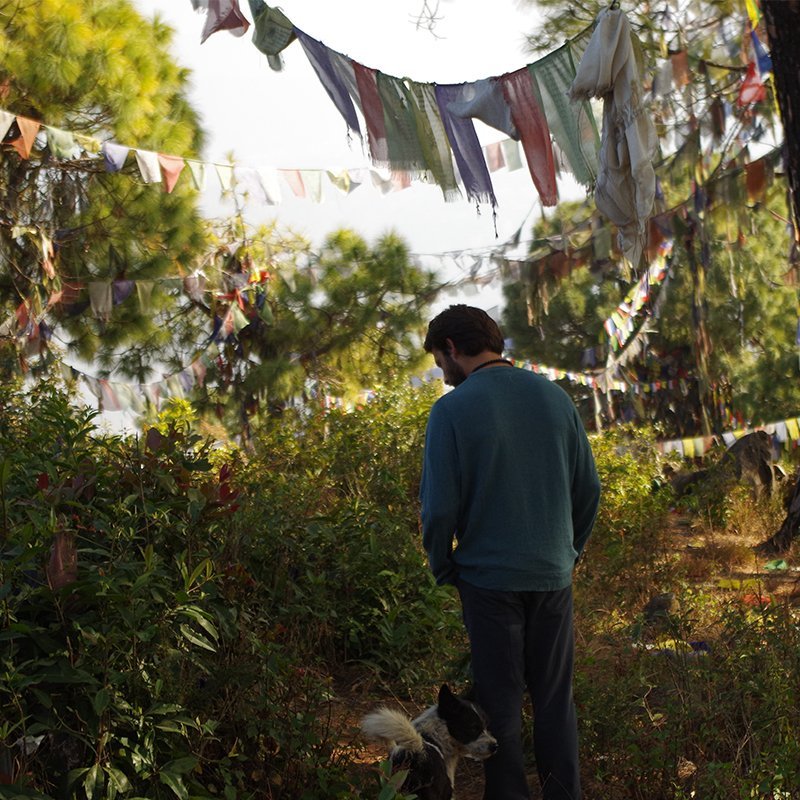I returned to New York in a state of bliss that remained fairly unwavering for two months. It was not the unchanging deep abiding that the masters speak of, but a “nyam,” a meditation experience manifesting as warmth in the throat and chest, tingling below the nose, a gentle thrill at the back of the neck. Sometimes it sunk into my belly. But it was a conditioned thing—born of causes and bound to pull apart.
I had spent the previous year in Nepal meditating alone on mountainsides for weeks at a time, learning from hidden masters, sitting before teachers whose eyes blazed uncontrived and fresh. In the face of their clarity my faults were brought into high-resolution. My pride, a barb; my defensiveness, a heavy blanket in summer. It was painful and ecstatic. Genuine spiritual practice is a process of refining; it sets a person on fire. What is left, what was left during those final months, was the joy of purity.
When I returned to America I thrilled at my plans for the coming years: splitting time between writing in the States, and studying in a monastery in Kathmandu. Despite having practiced with increasing intensity for the past 5 years, I was caught in the blush of thoughts that characterize a beginning practitioner. I still am. An essential aspect of my tradition is the firm recognition that things are impermanent. The plans that we understand and cling to are illusory. As I floated through a golden summer, a small but sharp voice said, “It will change, it will change.” And it did. This was the voice of wisdom, not that rosy play around my throat.
The fat began to fall off my body. Since my early teens I have relished athletic training. After spending so much time immobile during meditation practice, and choked in the brown smog of Kathmandu, I delighted in the chance to vigorously train my body in the summer green. Almost as soon as I returned to the States I started to sprint again, to lubricate my joints. My abdominal muscles sharpened and my legs became stronger. But too rapidly my ribs came through, like wood through paper. Though my lung capacity should have increased, I found myself oddly winded after small runs. Meditation experience continued to thrum.
In New York, I lived with my sister. She was 21 and I was 23. I came home from a week visiting family in Northern Michigan, a week characterized by strange health symptoms. I had been insatiably thirsty. I remember drinking two liters of water and immediately urinating, and then following with another liter. I had lapsed into states of semi-sleep, staring vacantly at the ceiling. I fell asleep at odd times. These episodes would fade in intensity, and then return in full force. I made excuses, attributing the clear degeneration of my body to odd things I had eaten, insufficient sleep, or psychosomatic induction. But right then, my sister come through the door and said in a cloud of fear, “Why are you so skinny?” I knew I needed to go to the hospital immediately.
The nurse took my blood sugar and the machine malfunctioned. When she punctured my index finger and drew a drop for the second time, an error message again clipped the screen. There was so much sugar in my system that the device could not take reading. I was immediately sent to the emergency room. I was crying when I arrived. A lady with sweet eyes put me on a gurney.
As I lay there, going into shock, I started to practice in accordance with the instructions my teachers had given me. I thought, “This might be it, why not?” The lights were strangely alive. “Why wouldn’t this be the end? So many people die in simple ways.” There were screams in the room next door. “There they are, dying now. Even if I do not die here, something must take this body eventually.” I saw a man raving in the waiting area, his lips sputtering.
The recognition of our fragility was strong enough to turn my aunt sitting beside me, my best friend at the gurney foot, the hospital walls, into a bubble. “That I might pop? That I will pop and all this will vanish.” I suddenly began to practice from the heart. The only refuge I had in those 10 hours of doctors pumping bags of IV fluid into my arm was the stability and clarity of my own mind. I could only go to the place my teachers had shown me—the shimmering imminence of wakefulness. Not checking out, a profound checking in.
After six hours it became clear that I wasn’t going to die that evening. Still, in the freshness of vulnerability I mentally walked out the failing of my body. Again and again I visualized the collapse of my organs. I wanted to nourish the intensity of my recognition of impermanence. The realness was a dress rehearsal for the final moment. It was so necessary to understand. Against the backdrop of death’s inevitability, the richness of appearances exploded.
It was as my teachers had said. The purpose of my meditation training was not to “bliss out,” not to gain the temporary and lovely feeling of a floating cloud. What I had trained for, instead, was fearlessness and stability. And almost miraculously, these qualities slid forward to characterize my experience. Despite surges of chemical anxiety, calmness and honesty remained. This is entirely due to the kindness of my teachers, their patience and their instructions. I have no qualities, I am a beginner, but in a moment of magic, the impressions of my practice blossomed.
I stayed in the hospital for four days. I was diagnosed with type-1 diabetes, an autoimmune disease in which my immune system attacks the pancreas, killing the cells that produce insulin. Insulin is needed to transfer sugar in the blood to cells that can use it as energy. Because my cells weren’t getting sugar, my body had been breaking down fat and muscle to use as fuel, dumping the ketone waste products into my system. I had essentially been dying of dehydration, and entered a shock-like state called diabetic ketoacidosis.
Immediately after I was released from the hospital, though flailing at the complicated procedures of pricking my finger, counting the carbohydrates of everything I put in my mouth, and sliding needles into my retracted belly (which will likely continue until a cure is found), I went on retreat with one of my Tibetan meditation masters. He happened to be visiting New York, offering teachings.
When I saw him and told him what had happened just a few days prior, his only response was a small smile and an, “Oh really?” There was no, “I’m sorry.” It was exactly what I needed to hear.
In part, his response subtly clarified a small suspicion that my situation is really not so bad. I have access to healthcare, to supportive friends and family, and posses numerous other structural conditions that allow me to thrive. But what I think he was really revealing was the powerful opportunity this disease provided for training. This is a condition by which I can draw open the shades to deeper wisdom.
I know that this deep understanding has not fully dawned, but I can say that there is a tenderness in my mind, previously obscured by a sense of invulnerability. This tenderness is for my own fleeting life, certainly, but also for the lives of others. Sometimes, when I look at someone and I see his or her fragility, a love comes forward that is not something I cultivate or control, but is born naturally from recognizing that we are all caught on a wheel of uncertainty together. This love is not unique to me. If it were, it would not be what it is. I think that anyone who looks squarely at life with an open heart will feel the press to be kind in the present, to forgive actions born of the confusion of believing that things will last forever, to commiserate silently yet with a sense of warmth and affection that emerges in a way that is beyond words.
Death by hypoglycemia, low blood sugar, remains ever on my shoulder, while attending to my fluctuating sugar demands vigilance. My training now recalibrates toward preparation for the inevitable moments when we choose to either be enmeshed in fear or open into the, yes, bliss, of looking straight into the face of what is.
In a stanza from George Oppen’s Psalm, he says:
In the small beauty of the forest
The wild deer bedding down – –
That they are there!
That they are there! That we are here, in all of our complexity and instability. The bliss is not in the red hue of a meditation swoon. It is in the full confession that we are here, impermanent and insubstantial.










Comments (0)